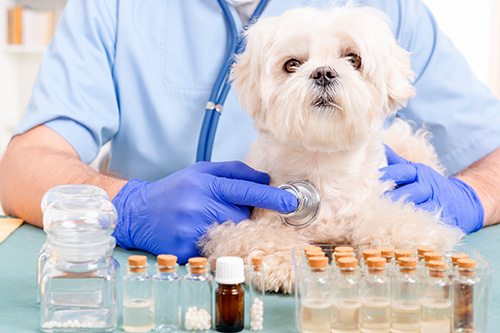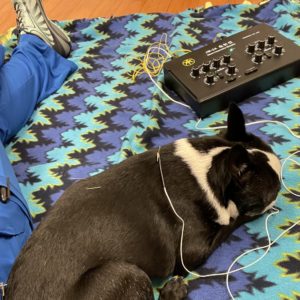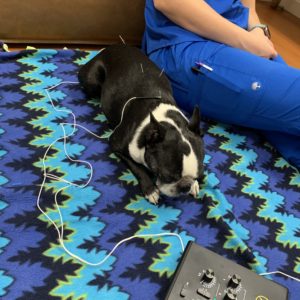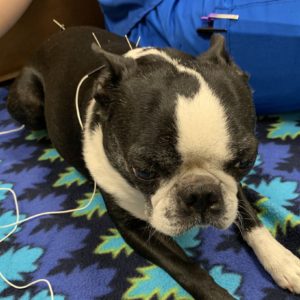
Acupuncture is one of the four components of TCVM. The other components include herbal medicine, food therapy and Tui na (medical manipulation). Although a newer veterinary modality, the practice of acupuncture dates back in China 3000-4000 years. Acupuncture involves the insertion of sterile needles into specific points in the body to produce a therapeutic effect. There are 173 acupoints in animals with 50 – 100 points that are most commonly used.
Modern research shows that acupoints are located in areas with a high density of free nerve endings, mast cells, small arterioles and lymphatic vessels. Studies indicate that stimulation of acupoints induces the release of beta-endorphins, serotonin and other neurotransmitters.
Is acupuncture safe?
Yes! It is very safe when administered by a qualified practitioner.
How soon can I expect to see results?
Some results can be seen immediately, but in some cases, your pet might require several treatments. A minimum of 3 – 5 treatments 1 – 2 weeks apart might be needed for more chronic conditions.
How long is each session?
Typically, the first session takes about an hour. During this time, a physical exam, nutrition and Chinese herb consultation and needle treatment take place. Follow up exams are generally 30 minutes long. Pet-parents are not expected to stay in the room with the patient but are welcome to do so.
Does acupuncture hurt?
Rarely! Acupuncture needles are very fine, just slightly thicker than a strand of hair. Many animals will relax and some even doze off during treatment!
What are the physiological effects of acupuncture?
As with people, studies have shown that animals experience physiological effects such as:
- Pain Relief
- Promotion of healing
- Improved gastrointestinal motility
- Anti-inflammatory effects
- Hormone balance
- Anti-febrile effect (bring an elevated body temperature down)
- Immunoregulation
- Symptoms associated with old age and/or cancer
When is acupuncture recommended?
Clinical trials indicate that acupuncture can be effective in the following conditions:
- Musculoskeletal disorders: muscle soreness, back pain, osteoarthritis and degenerative joint pain
- Neurologic disease: seizures, intervertebral disc disease (IVDD), laryngeal paralysis
- Gastrointestinal disorders: Diarrhea, gastric ulcers, vomiting, constipation, nausea
- Other chronic conditions: dermatitis, asthma, kidney failure, liver failure, Cushing’s disease, hypothyroidism (low thyroid function)
Suggested websites for more information on veterinary acupuncture:
- dog2doc.com
- YouTube: search Mitzie Vargas, DVM
- tcvm.com
- aava.org
Adapted from FAQ for Veterinary Acupuncture from the Chi Institute, Reddick, Florida 2019
Acupuncture Glossary
Arterioles: Smaller than an artery but larger than a capillary, arterioles are blood vessels that play a significant role in the transport of chemicals during increased metabolic activity. They can actively respond to a variety of physical stimuli.
Free nerve endings: Free nerve endings are formed by branching terminations of sensory fibers in the skin. They primarily respond to pressure, temperature and pain.
Neurotransmitters: They are chemicals produced by the body that serve to send messages between two neurons (nerves) or between neurons and muscles.
Mast cells: A type of white blood cell that plays an important role in the immune system, regulating how it responds to bacteria and parasites. They contain histamine, heparin, cytokines, and growth factors. Adapted from Science Direct Elsevier Books
Tui na: pronounced “Twee nah” literally means to “pinch” and pull” is a type of therapeutic massage that can help bring balance to the disharmony of the body. This is a modality that guardians can use at home by guardians.





